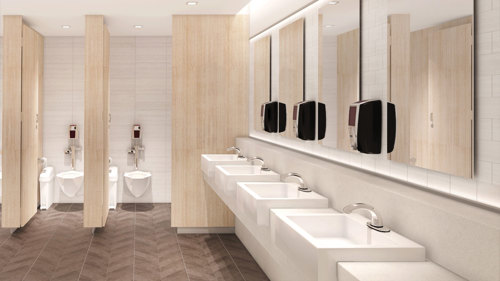
Since the 1st of July 2019, the Australian Government has refined the cleaning and sanitisation requirements in aged care to ensure the health of older Australians is prioritised. However, as COVID restrictions continue to ease and society returns to normal, aged care cleaning staff and management may become negligent regarding the importance they have on resident health. Though the threat of COVID-19 is much smaller than it was throughout the 2019-2021 period, many threats can still compromise the health of elder Australians. Therefore, the following blog aims to showcase the correct cleaning procedures in aged care and why they are vital.
Cleaning procedures in aged care - Disinfect high touch point surfaces
Cleaning, sanitising and disinfecting high touch point surfaces is vital to avoid the transmission of infections. Unfortunately, in aged care settings, elder or immune-compromised Australians are more likely to fall ill. Cold and flu seasons, as well as viral outbreaks, can therefore be very damaging to the health of residents in centres. The managers and cleaning staff at these centres, therefore, need to be proactive rather than reactive to guarantee they maximise the health of their residents.
Essentially, this entails deep cleaning and sanitisation of high-touch points before an outbreak in the aged care facility. Primarily, the reason for this is to ensure cleaning staff are across their required cleaning schedules. This can prevent confusion or the missing of high touch points during an outbreak. Above this, it can also remove bacteria that could cause a superspreader, such as bacteria living on a railing touched by a sick visitor.
Cleaning staff in aged care can best sanitise high touch points with Rubbermaid HYGEN Microfibre Cloths. These cloths have been innovated to pick up and trap fast-spreading pathogens from surfaces such as tables, chairs, bed rails and handrails. Staff can choose HYGEN launderable microfibre or HYGEN disposable microfibre based on the needs of their area. They can find out more about the benefits of each type of microfibre based on cleaning procedures in aged care in our recent blog.

Cleaning procedures in aged care - keep bathrooms dry
Bacteria thrive best in moisture and dark environments. Bathrooms in aged care centres typically provide both of these conditions, especially if they are built internally and have no window access. While many rooms, such as common areas, may only require a daily mop, bathrooms must be checked twice daily to create an environment that is as free from bacteria as possible.
The most common places where moisture is found in bathrooms include:
On top of eradicating bacteria from the bathroom, cleaning these areas frequently can reduce the risks of slips, trips and falls, which can be life-threatening to older Australians. Dictating this reason to cleaning staff from a management point of view can help put the responsibility back on the team. It can also help them accept their accountability and make them more likely to stick to their cleaning schedules, even if the threat of sickness is not visible.
Staff should clean these moisture-dense areas with the HYGEN range. The HYGEN disposable mop heads are useful if the spillage is caused by human waste, such as urine. After cleaning, these cloths can be disposed of. This prevents contaminating other launderable materials.
However, regardless if staff choose the launderable or disposable solutions, these innovative cloths can absorb large volumes of water to ensure the space is as dry as possible, even immediately after cleaning. 
Cleaning procedures in aged care: Implement good waste management
Aged care facilities have a remarkably high amount of clinical and pharmaceutical waste. However, they also deal with rubbish across various other categories, including food, human waste and paper waste. If left in bins for too long, this rubbish can attract dangerous bacteria, which can be critical to the elderly.
Any indoor waste bins, such as a Slim Jim Bin, must be emptied at least once daily to prevent bacteria from becoming hazardous to aged care residents. Bins in dining rooms or kitchens should also have a designated lid, such as the lid of a step-on bin. This is because food waste will grow bacteria quickly, and a lid can enclose any hazards until it is emptied.
Not all aged care centres will have access to a rubbish removal service each day. If this is the case, emptied bins should be stored outside in a covered outdoor bin. This cleaning procedure in aged care can prevent bacteria from making way through the premises and impacting the quality of life.
As well as taking out bins, cleaning staff must remove waste from the premises as soon as possible. For example, if a resident leaves some unfinished lunch at their table, this should be disposed of immediately. Doing so can prevent bacteria from growing on other surfaces, which may reduce the effectiveness of previous cleaning and sanitisation.
s
Rubbermaid Commercial helps aged care businesses implement the right cleaning procedures
At Rubbermaid Commercial, we are experts in cleaning and sanitisation. We are passionate about helping businesses, particularly those in aged care, access the solutions they need to protect their resident’s health and safety. Contact our team today to find out more.